Towing safely and efficiently demands more than just raw engine power. Whether you’re planning to explore the Outback with a caravan, haul a boat to the coast, or transport work equipment to remote sites, selecting the right vehicle is crucial. In 2025, Australian drivers are spoiled for choice with an evolving lineup of utes, SUVs, and even hybrids offering impressive towing capabilities.
From tried-and-tested diesel utes to cutting-edge plug-in hybrids, this list covers the top 10 vehicles ready to tow across Australia’s diverse landscapes.
| Model | Starting Price* | Braked towing capacity |
| BYD Shark 6 | $57,900 | 2500 kg |
| Mitsubishi Triton | $63,840 | 3500 kg |
| Isuzu D-Max | $78,900 | 3500 kg |
| Ford Everest | $81,200 | 3500 kg |
| Ford Ranger | $90,440 | 2500 kg |
| Toyota Prado | $99,990 | 3500 kg |
| Chevrolet Silverado | $130,500 | 4500 kg |
| Toyota LC300 | $144,791 | 3500 kg |
| Toyota Tundra | $155,990 | 3500 kg |
| Ram 2500 Laramie | $175,950 | 4500 kg |
*EGC prices mentioned, drive-away prices will vary depending on the state where the purchase is made.
BYD Shark 6
As the first serious plug-in hybrid ute with real towing chops, the BYD Shark 6 shakes up the segment. Combining a 1.5-litre petrol engine with dual electric motors and a 30kWh battery, it delivers a massive 321kW and 600Nm.
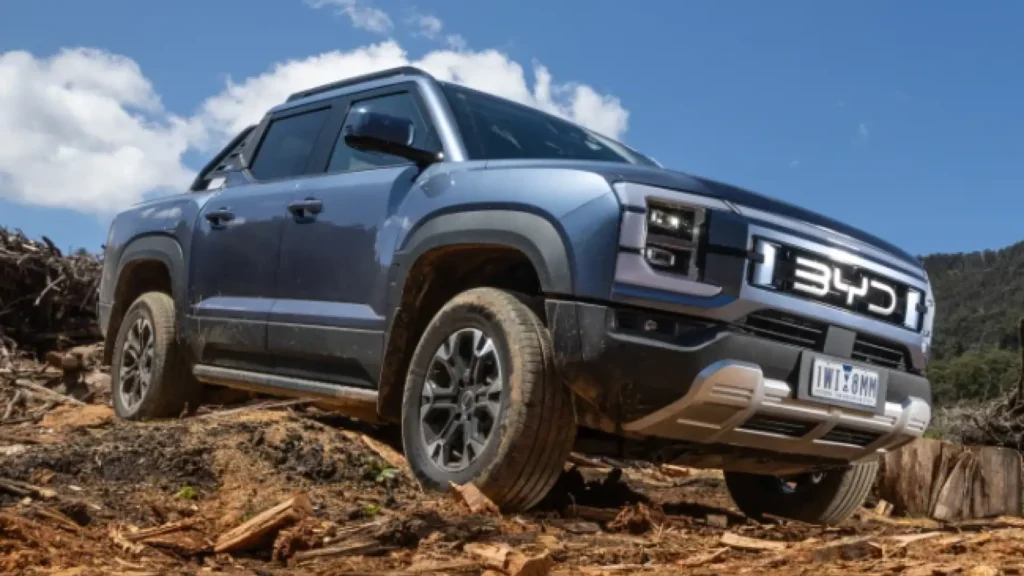
Its EV-only range of around 80km is handy for daily commuting, while the petrol engine steps in for towing. With a maximum braked towing capacity of 2500kg , it’s not class-leading, but it’s significant for a plug-in hybrid.
If you’re looking for a towing vehicle that cuts fuel use during everyday driving, the Shark 6 stands out as a greener alternative.
Pros
- Great value
- Smooth hybrid
- Pleasant drive
Cons
- Low towing/payload
- Bumpy ride
- Limited electric range
Mitsubishi Triton
The 2025 Mitsubishi Triton might not match its American rivals for brute force, but it brings commendable value and capability to the table. It remains one of the most affordable new dual-cab utes in the market.

Its practical size, combined with a robust chassis and decent ground clearance, makes it a solid performer for light towing duties. Rated to tow up to 3100kg, the Triton also offers good off-road chops, especially in GLS and GSR trims.
Budget-conscious buyers after a well-rounded ute with decent towing capacity will find the Triton ticks many of the right boxes.
Pros
- Simple and comfortable interior
- Good fuel efficiency
- Well-positioned mid-range 4×4 variant
Cons
- No LEDs, halogen headlights
- Driver monitor needs improvement
- Underwhelming performance from standard tyres
Isuzu D-Max
The Isuzu D-MAX continues to be a go-to for buyers needing rugged dependability with real towing credentials. With a 3.0-litre turbo-diesel engine producing 140kW and 450Nm, it’s more about consistency than raw power.
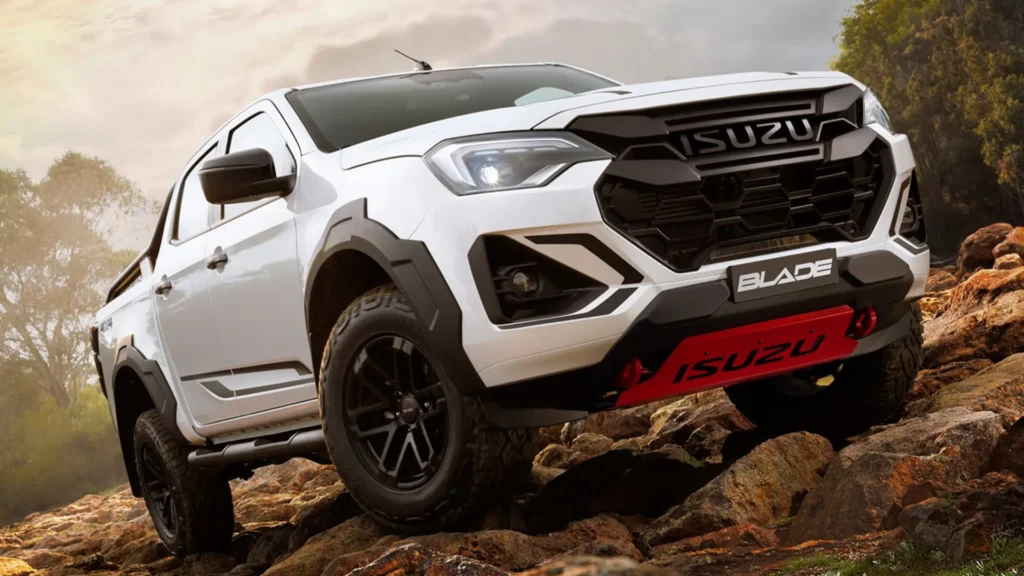
Its appeal lies in its solid ride, strong low-end torque, and class-leading warranty and reliability. The interior is well-appointed, especially in higher trims like the X-Terrain and Blade editions, adding comfort to its workhorse nature.
Capable of towing up to 3500kg, the D-MAX remains a true dual-purpose vehicle. It’s a smart choice for those who value functionality and proven engineering over new-age comforts and conveniences.
Pros
- Sturdy diesel powertrain
- Comfortable cabin, good tech
- Good ride quality
Cons
- Missed out on full-time 4WD
- Keeps getting more expensive
- Rattles at high speeds
Ford Everest
Built on the same platform as the top-selling Ford Ranger ute, the Ford Everest is a seven-seat SUV that doesn’t compromise on towing abilities. With the V6 turbo-diesel under the bonnet, it tows up to 3500kg while offering superior ride comfort and more space for passengers. Plus, you can save a fair bit of cash buying the Everest compared to the Ranger.
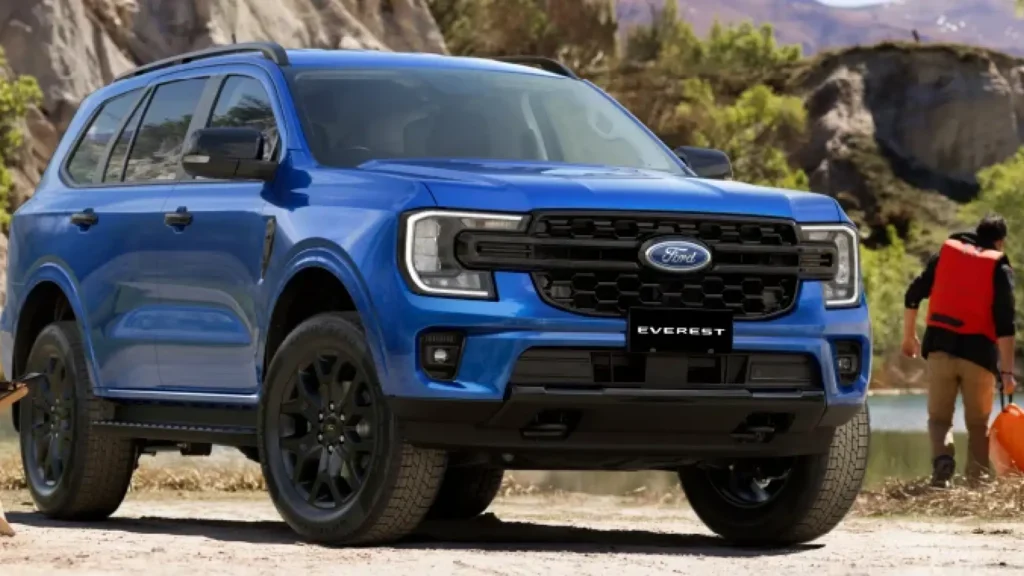
Its advanced driver assist systems and an available integrated trailer brake controller give it a real edge for towing newbies and veterans alike. Plus, it’s better suited to family duties than a dual-cab ute.
For those needing towing ability wrapped in SUV practicality, the Everest is a compelling all-rounder.
Pros
- Fully loaded Everest
- Effortless V6 diesel
- Comfy, refined highway ride
Cons
- Platinum is pricey
- Firm ride (21-inch wheels)
- Inefficient diesel figures
Ford Ranger
Australia’s favourite ute is always going to be on your list if you need to tow. The 2025 Ford Ranger V6 diesel variants continue to blend comfort, towing strength and versatility in a package that’s hard to beat.
Its 3.0-litre V6 turbo-diesel produces a punchy 184kW and 600Nm, and paired with a 10-speed automatic, it tows up to 3500kg with poise. Its high gross combination mass (GCM) of 6400kg also gives it an edge when hauling heavier caravans. In case you feel guilty about the diesel, you can also look at the new Ford Ranger PHEV which also offers a braked towing capacity of 3,500kg, but you will have to pay a premium for it.

For those who tow regularly but want to keep it manageable in city spaces, the Ranger’s balance of size, power and comfort is difficult to overlook.
Pros
- Strong engine and robust towing and payload capabilities
- Comfortable, composed ride quality
- Technology features are easy to use
Cons
- More expensive than competitors
- Only one cab and bed configuration
Toyota Prado
The all-new Toyota Prado brings a modern twist to a trusted nameplate. It’s grown in size and tech, offering better refinement and improved comfort, while still delivering strong towing capability.
Powered by a diesel engine with 48V mild hybrid assistance, it develops more torque and uses less fuel than before. It can now tow 3500kg – matching its key rivals – and does so with new electronic trailer aids.
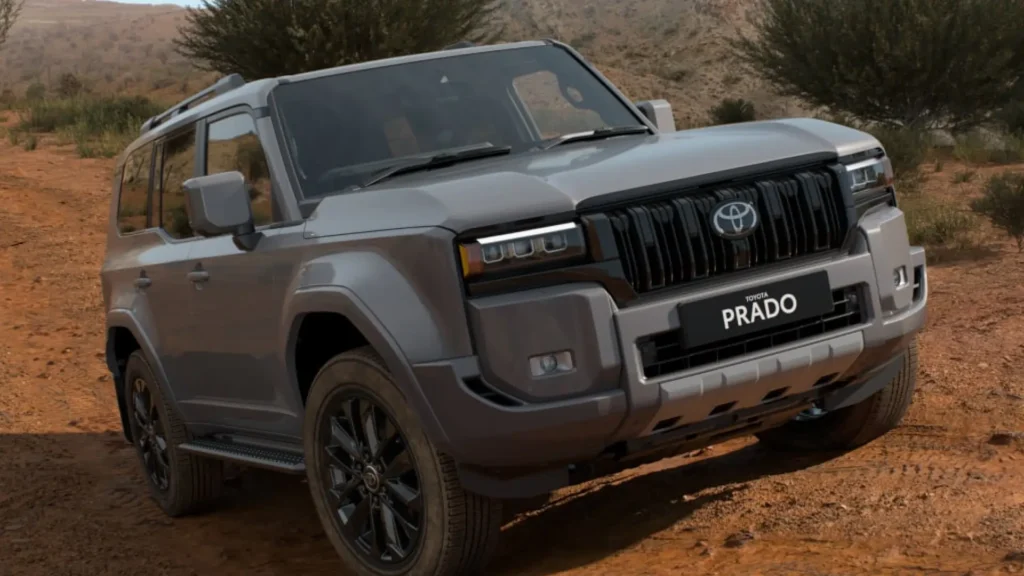
With a stronger platform and revised suspension, it tries to be better both on and off the road. The Prado remains a sensible choice for Aussie families towing boats, vans or trailers.
Pros
- Improved steering for an engaging drive
- Comfortable, quiet cabin on/off-road
- Easy to take off-roading
Cons
- Battery limits third row space
- No hybrid/V6 option unlike some rivals
- Short service intervals
Chevrolet Silverado
American muscle meets practicality in the Chevrolet Silverado ZR2, a full-size pickup engineered for serious load-lugging and off-road prowess. But most importantly, you get a V8 which is something the Ford F-150 does not offer here. The Silverado is built to take on tough jobs with a maximum braked towing capacity of 4200kg and a powerful 6.2-litre V8 that delivers 313kW and 624Nm.
Its off-road credentials are boosted with a 68mm lift, off-road dampers and chunky mud-terrain tyres. The Silverado ZR2 doesn’t just tow well; it handles rough ground with surprising finesse. However, in pursuit of utility, modern luxuries like a sunroof and head-up display have been omitted.
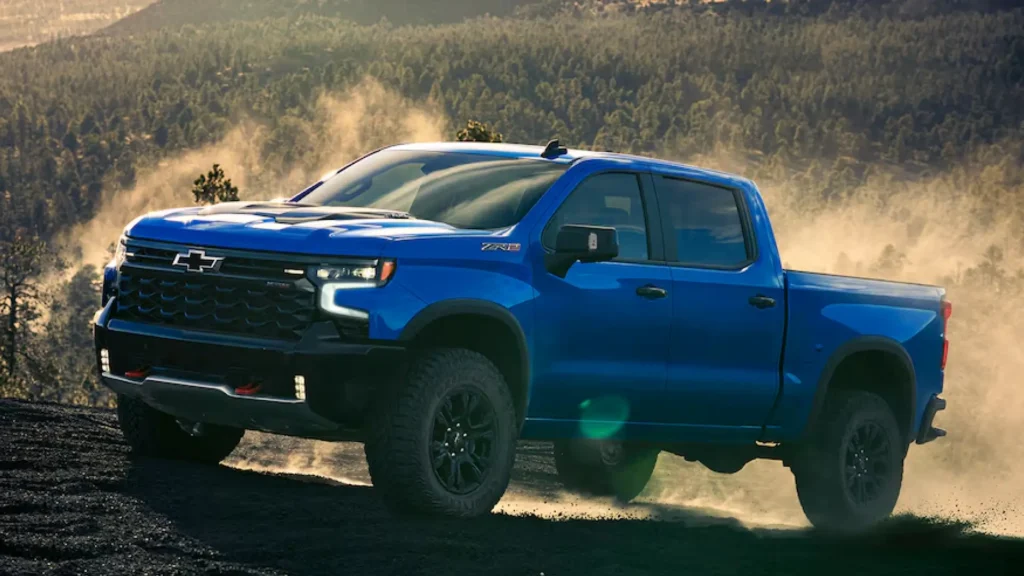
While it may lack some premium creature comforts, it’s a beast of a truck that doesn’t back down.
Pros
- Big American V8
- Excellent rear legroom
- Fairly capable off-road
- Lots of bed tie-downs, massive capacity
Cons
- Rougher ride than rivals (most trims)
- Lacks modern tech
- ZR2 off-road inferior
Toyota LandCruiser 300
The LandCruiser 300 Series continues the iconic nameplate’s legacy of reliable practicality. Replacing the V8 with a 3.3-litre twin-turbo V6 diesel had some sceptics, but the new engine delivers 227kW and 700Nm, more than enough for a braked towing capacity of 3500kg.
Its towing manners are excellent, especially in off-road scenarios where the LandCruiser excels. Though its payload can be limited with a full towing load, it’s ideal for lighter trailers or when travelling with gear and family. While its towing capacity is the same as that of the Ford Everest, the Toyota’s price tag reflects the difference in size, refinement and cabin experience.
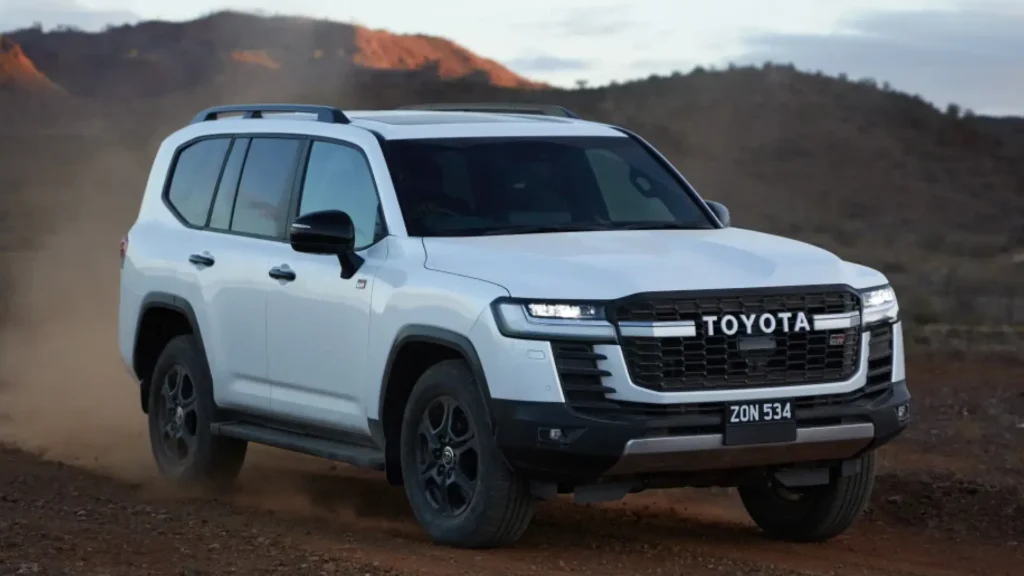
Comfortable, refined, and capable both on and off the bitumen, the LC300 remains a favourite among long-distance tourers and grey nomads alike.
Pros
- Impressive off-road
- Silky twin-turbo V6 diesel
- Improved interior
Cons
- Increased prices
- 10,000km service intervals
Toyota Tundra
New to Australian showrooms in 2025, the Toyota Tundra offers immense towing capabilities backed by trusted engineering. Locally converted by Walkinshaw, it brings full-size American truck power wrapped in a refined, high-tech cabin.
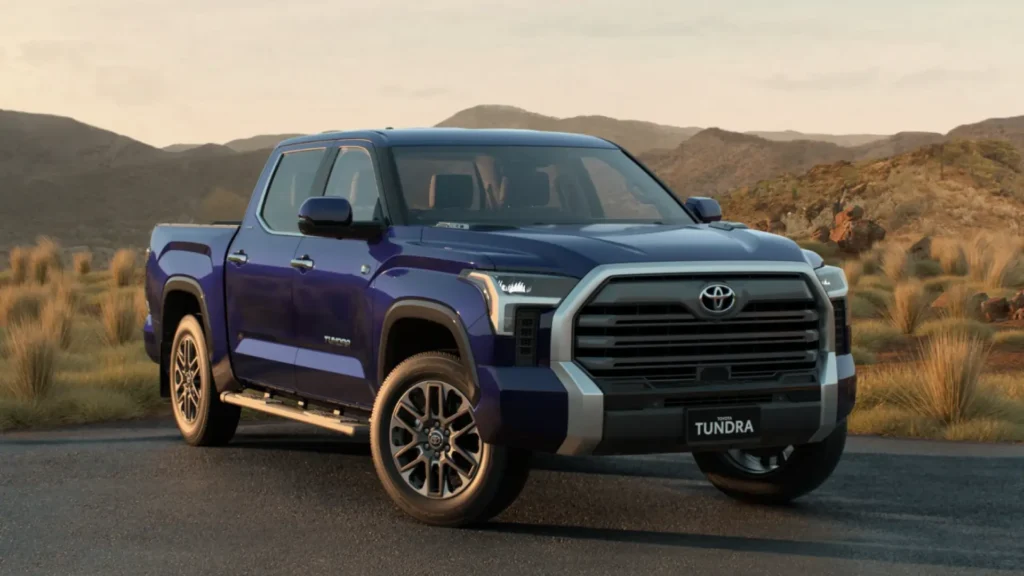
Under the bonnet sits a 3.5-litre twin-turbo V6 pumping out 326kW and 790Nm, enough to comfortably tow up to 4500kg. With clever packaging and a spacious interior, the Tundra is equally suited to long hauls and daily duties. It’s a solid alternative to traditional heavy-duty 4WDs for those needing serious towing capacity.
Pros
- Smooth turbo V6 power
- Dent/scratch-resistant bed
- 14-inch touchscreen operates smoothly
Cons
- Poor base engine fuel economy
- Front pillars limit visibility
Ram 2500 Laramie
For drivers with heavy-duty towing needs, the Ram 2500 is about as capable as it gets. With a towing capacity exceeding 3500kg and impressive payload capacity, this is a real truck built for real work.
Its 6.7-litre turbo-diesel inline-six churns out 276kW and an enormous 1084Nm of torque. That makes light work of big trailers or fifth-wheel setups. It does come at the cost of fuel economy, but for serious tower’s, that’s a trade-off worth making.
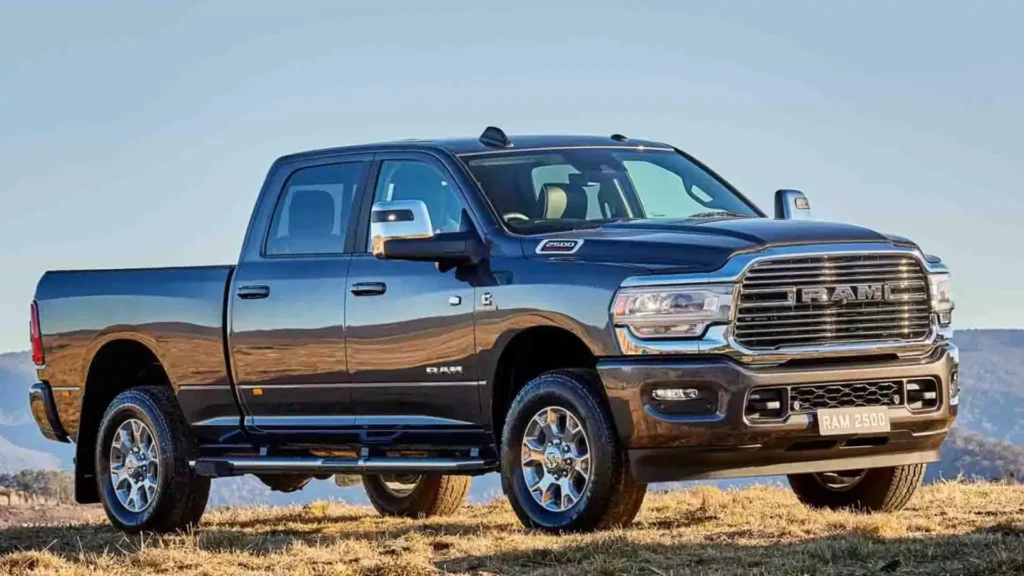
Despite its brutish exterior, the cabin is impressively refined with high-end materials and tech. It’s America’s idea of luxury and muscle, brought down under.
Pros
- Impressive diesel power/torque
- Attractive, high-tech interior
- Quiet, comfortable (large/rugged)
Cons
- Engines less potent than Ford
- High driving position
Conclusion
From powerful American trucks with massive engines to efficient plug-in hybrids, the 2025 market reflects a wider range of choices for towing vehicles than ever before. Whether it’s weekend towing for outdoor adventures, long-haul caravaning, or professional worksite use, these vehicles offer a strong foundation for safe and capable towing.
Considerations like payload capacity, gross combination mass, and trailer tech integration can significantly affect the towing experience. By matching these features with your specific towing requirements, the vehicles on this list can help you tow with confidence across any Australian terrain. Regardless of what you’re pulling, there’s a suitable tow vehicle ready to take the load.
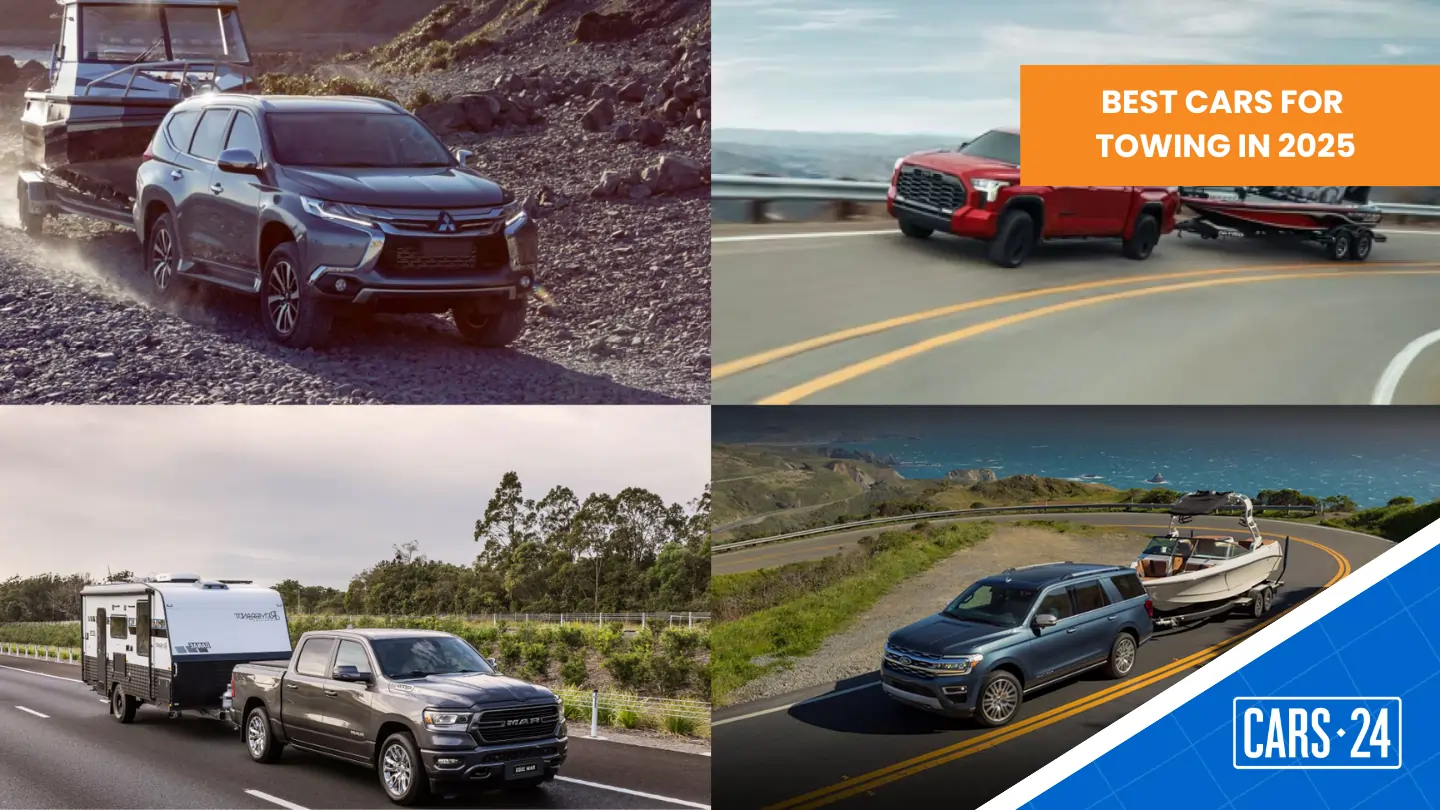
Comments
New Comment